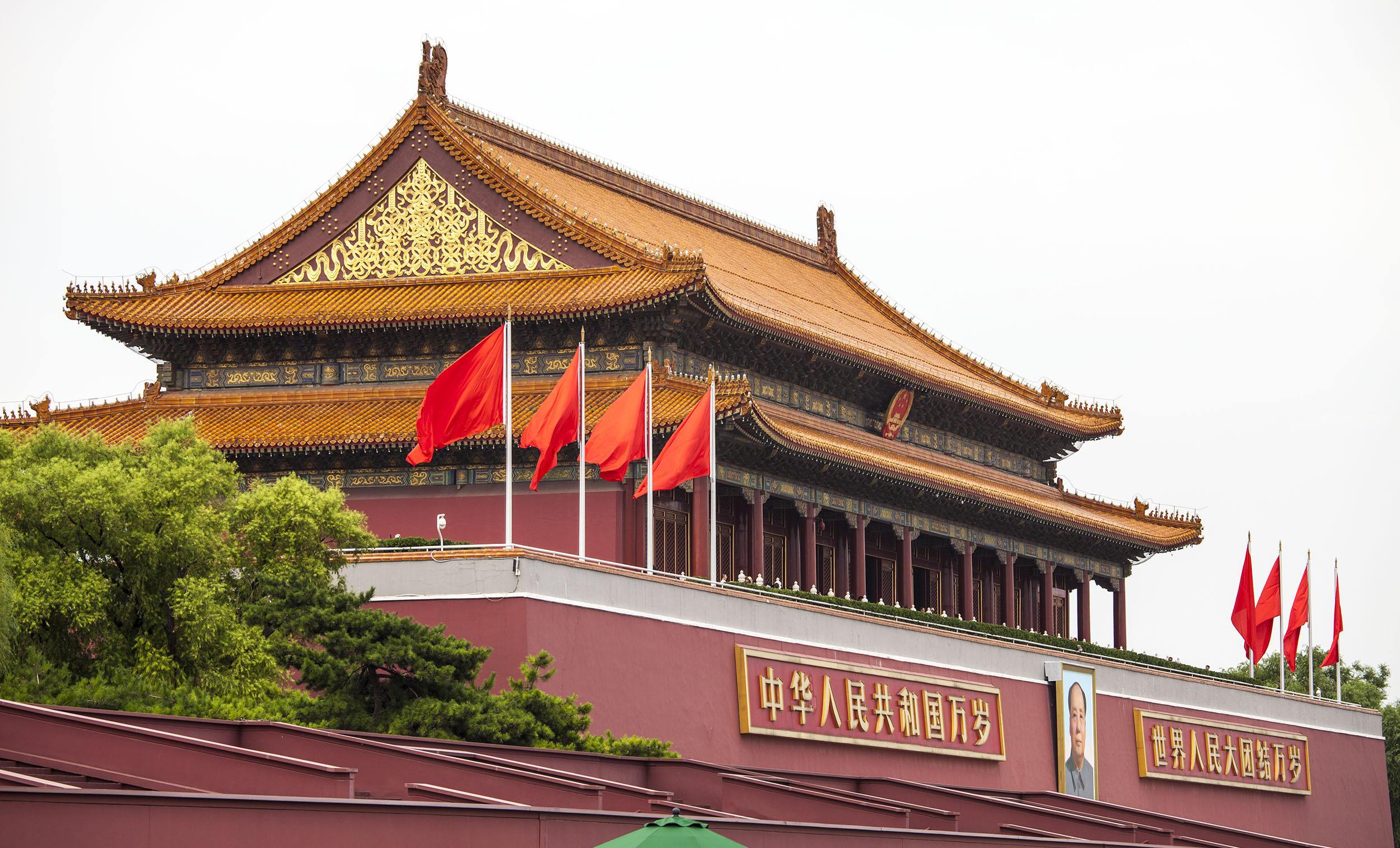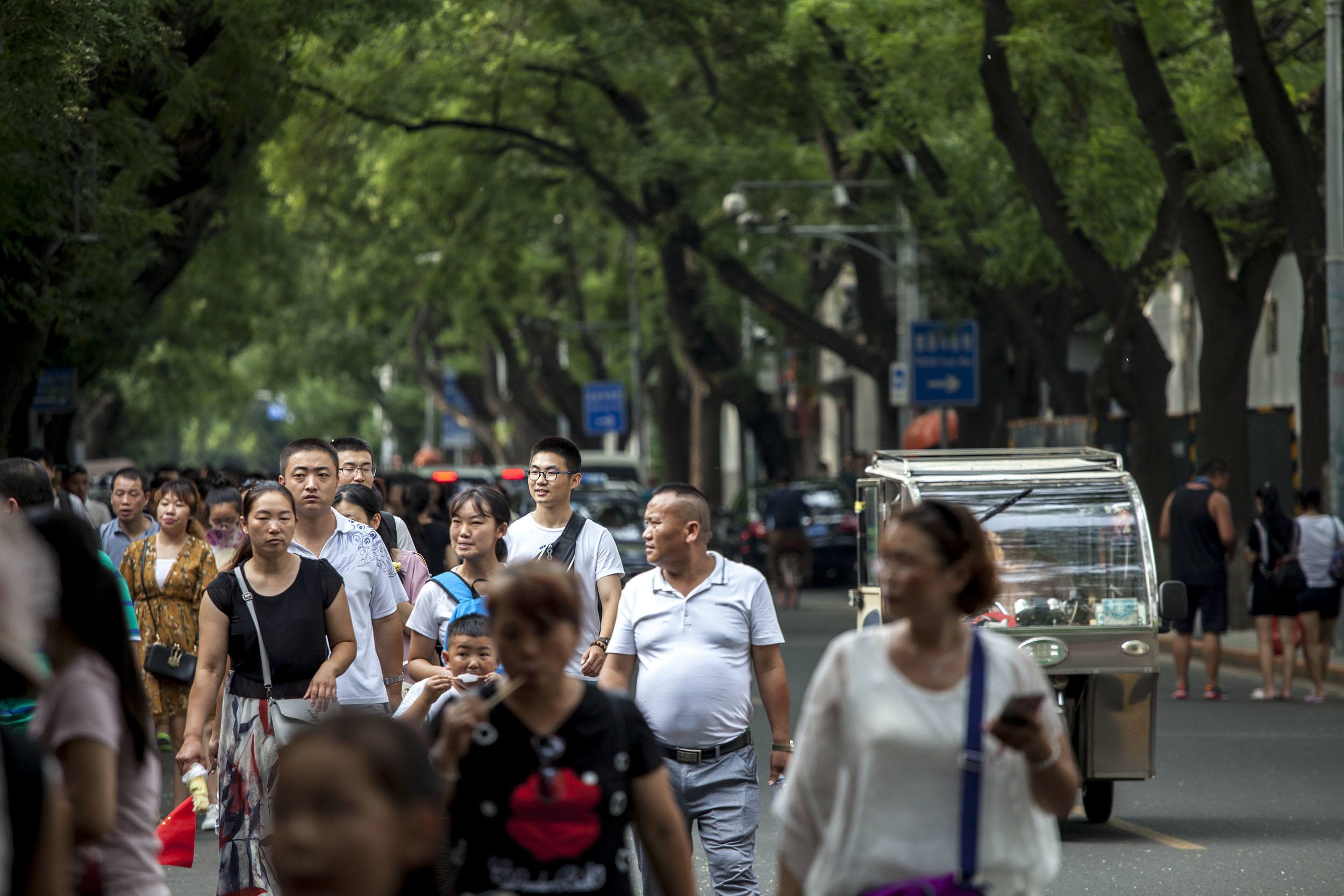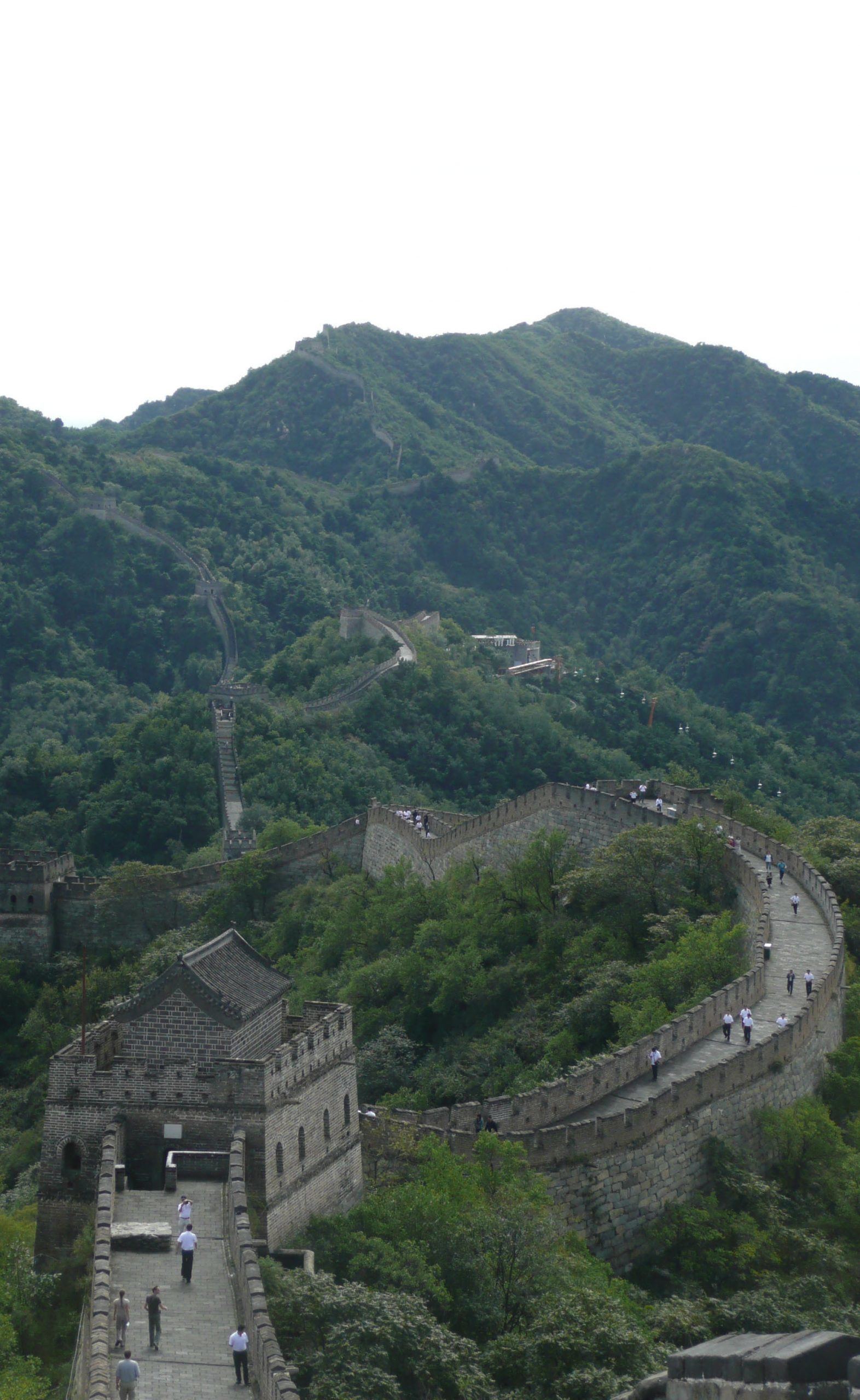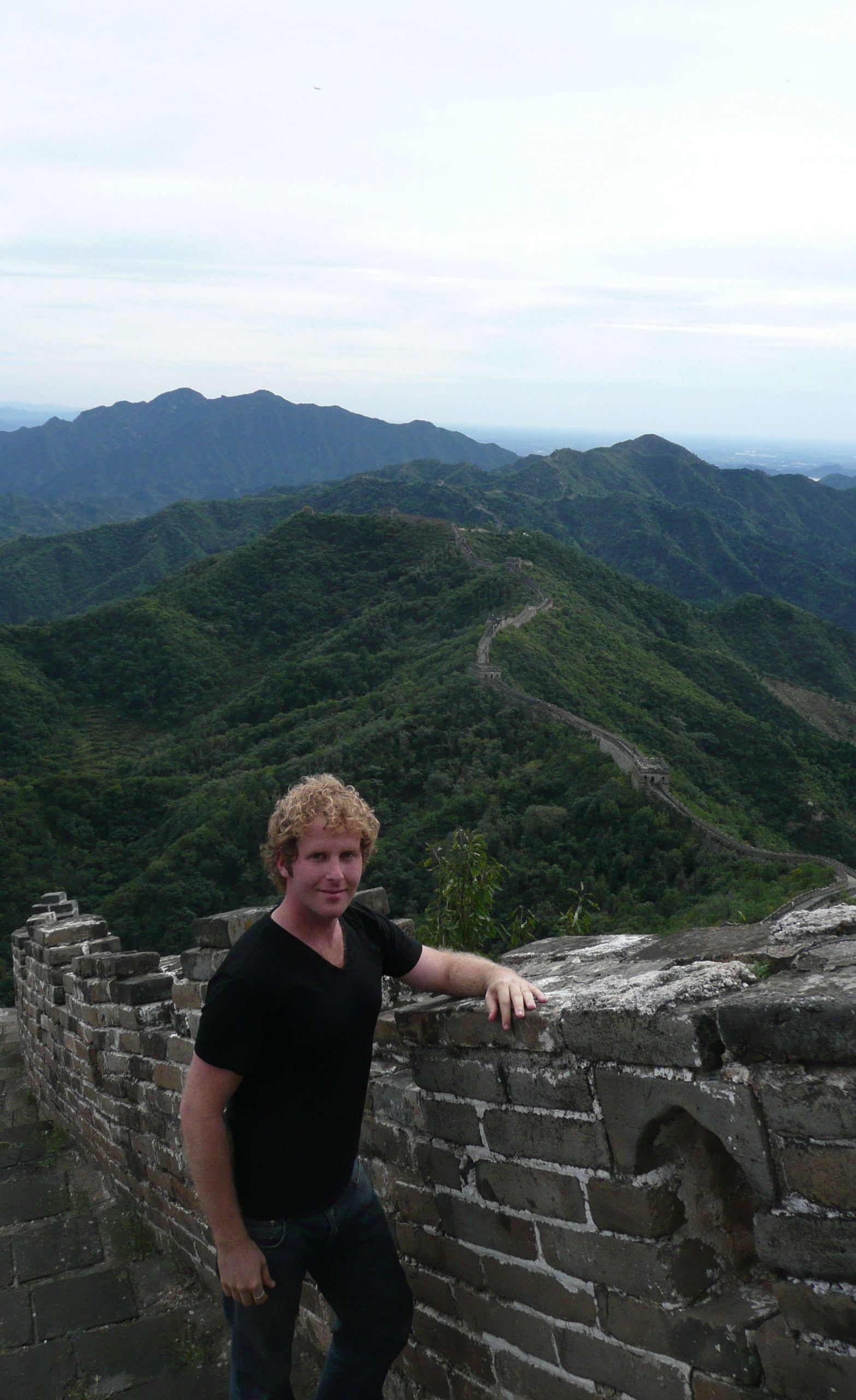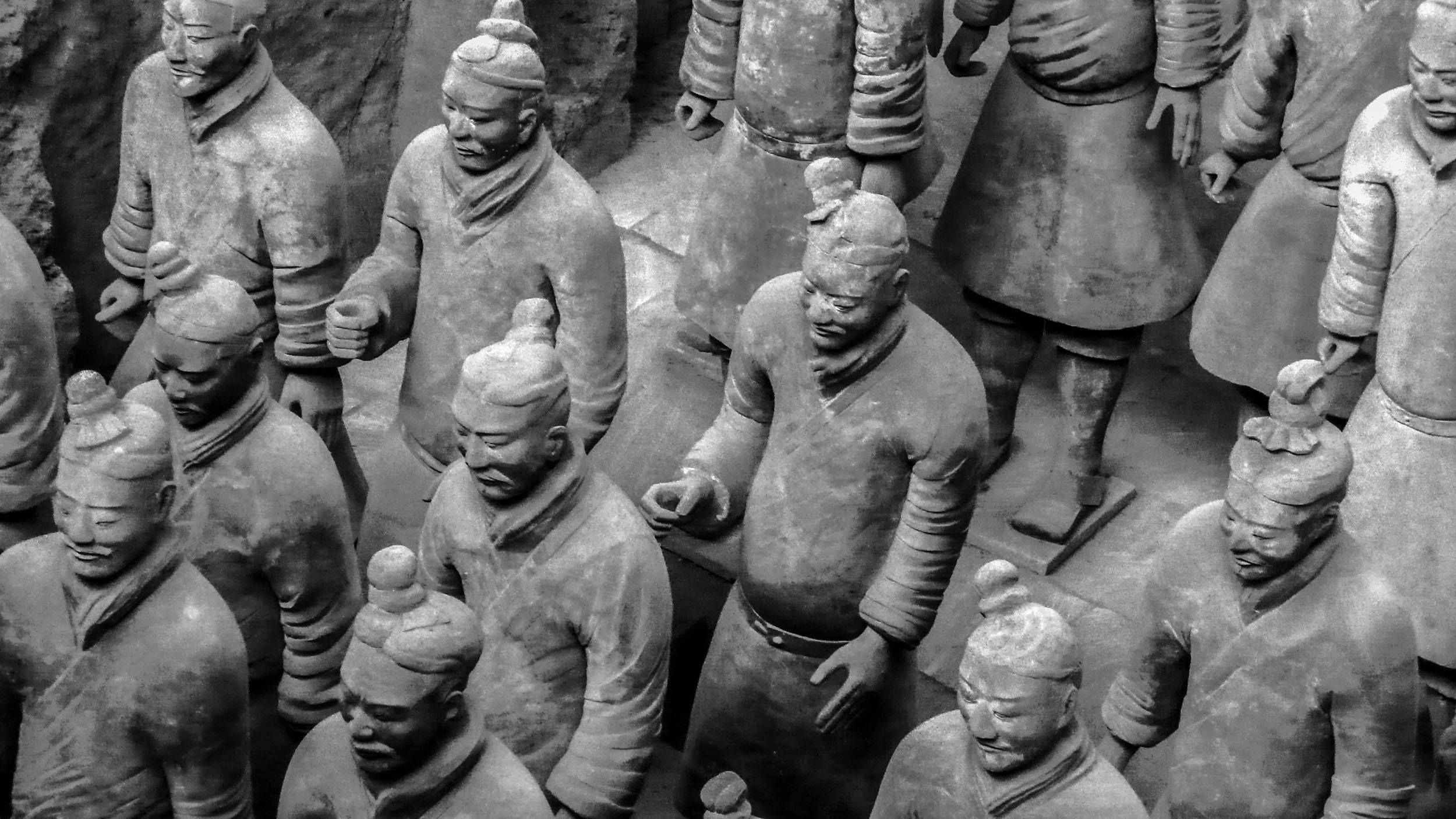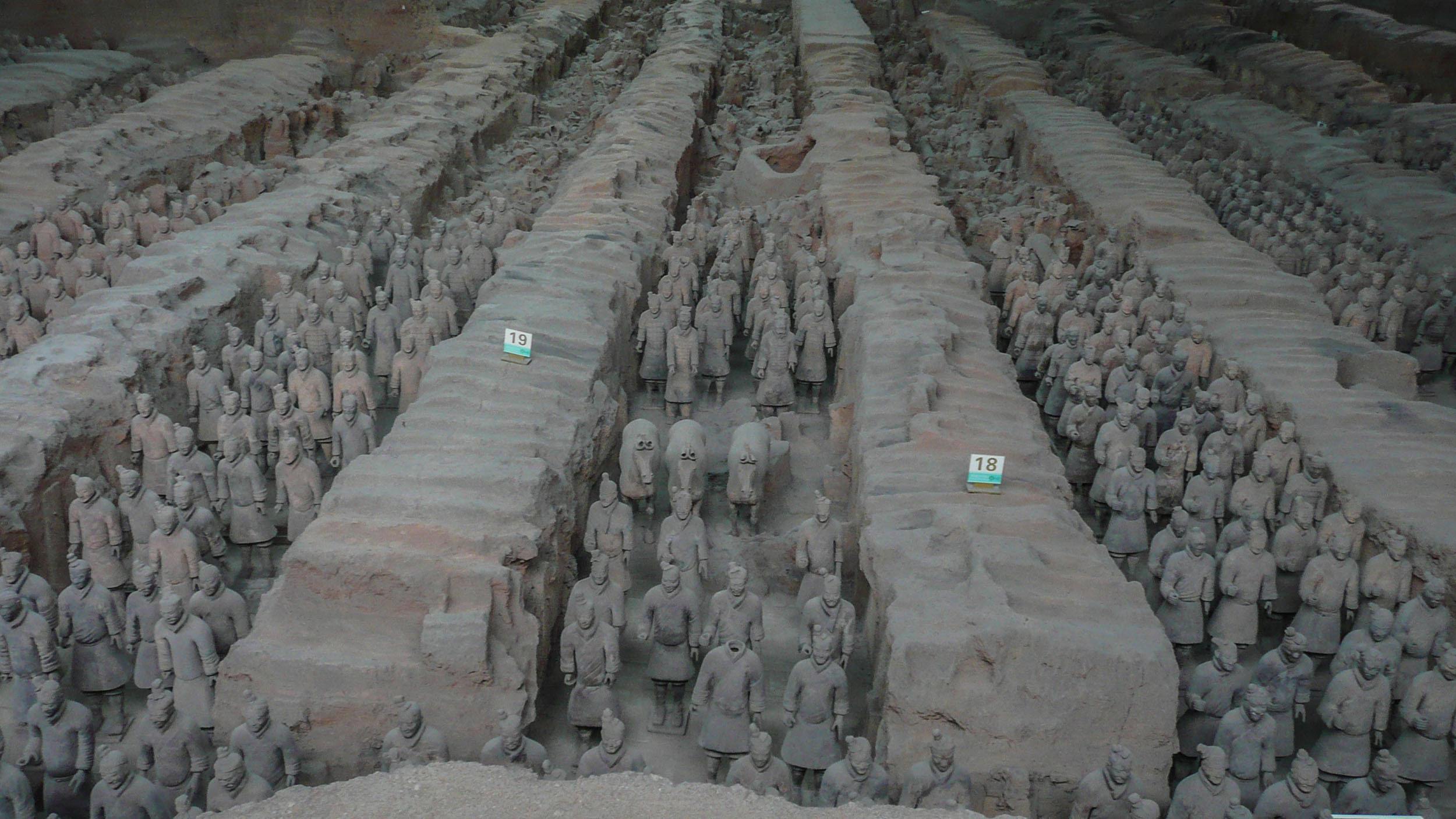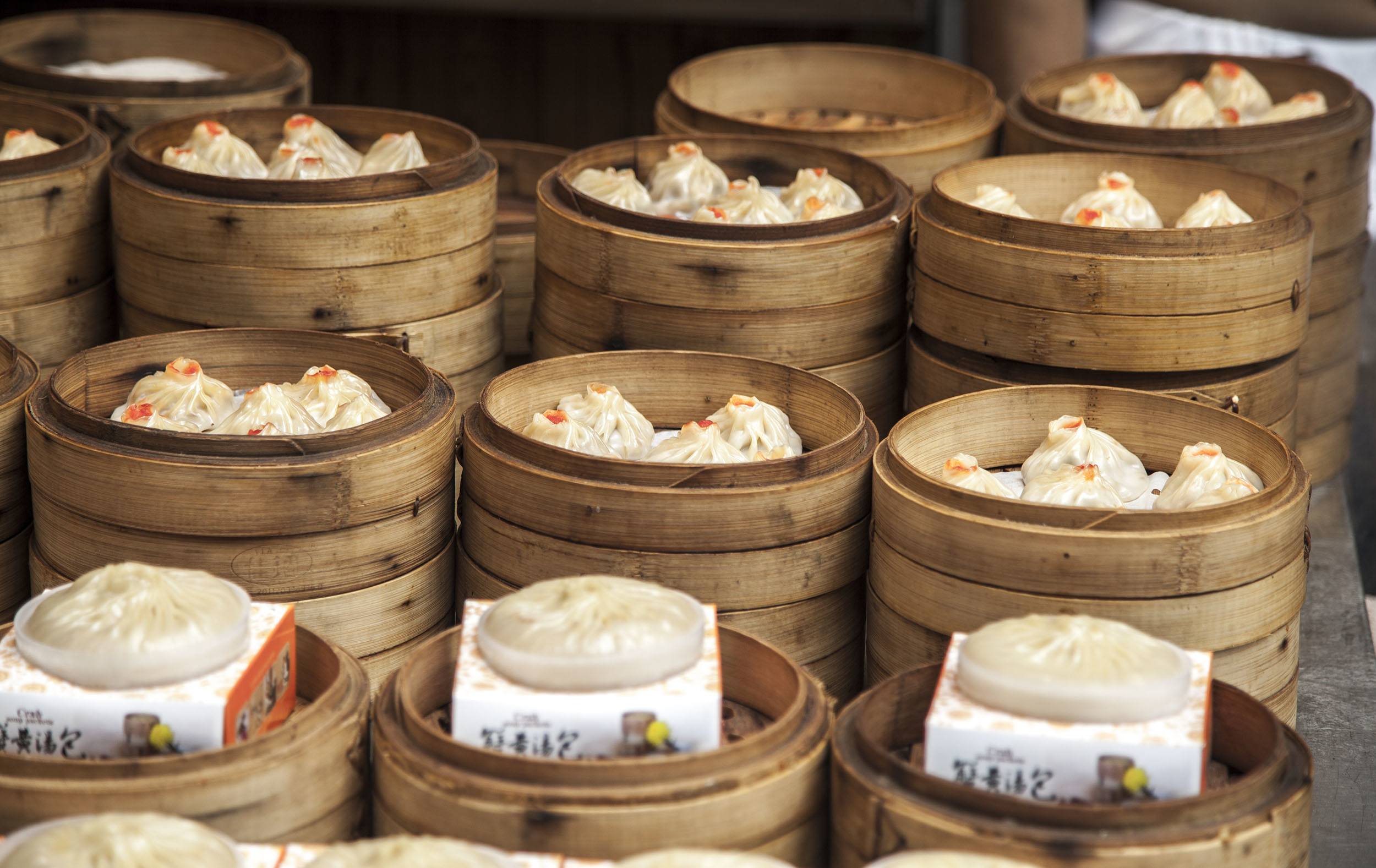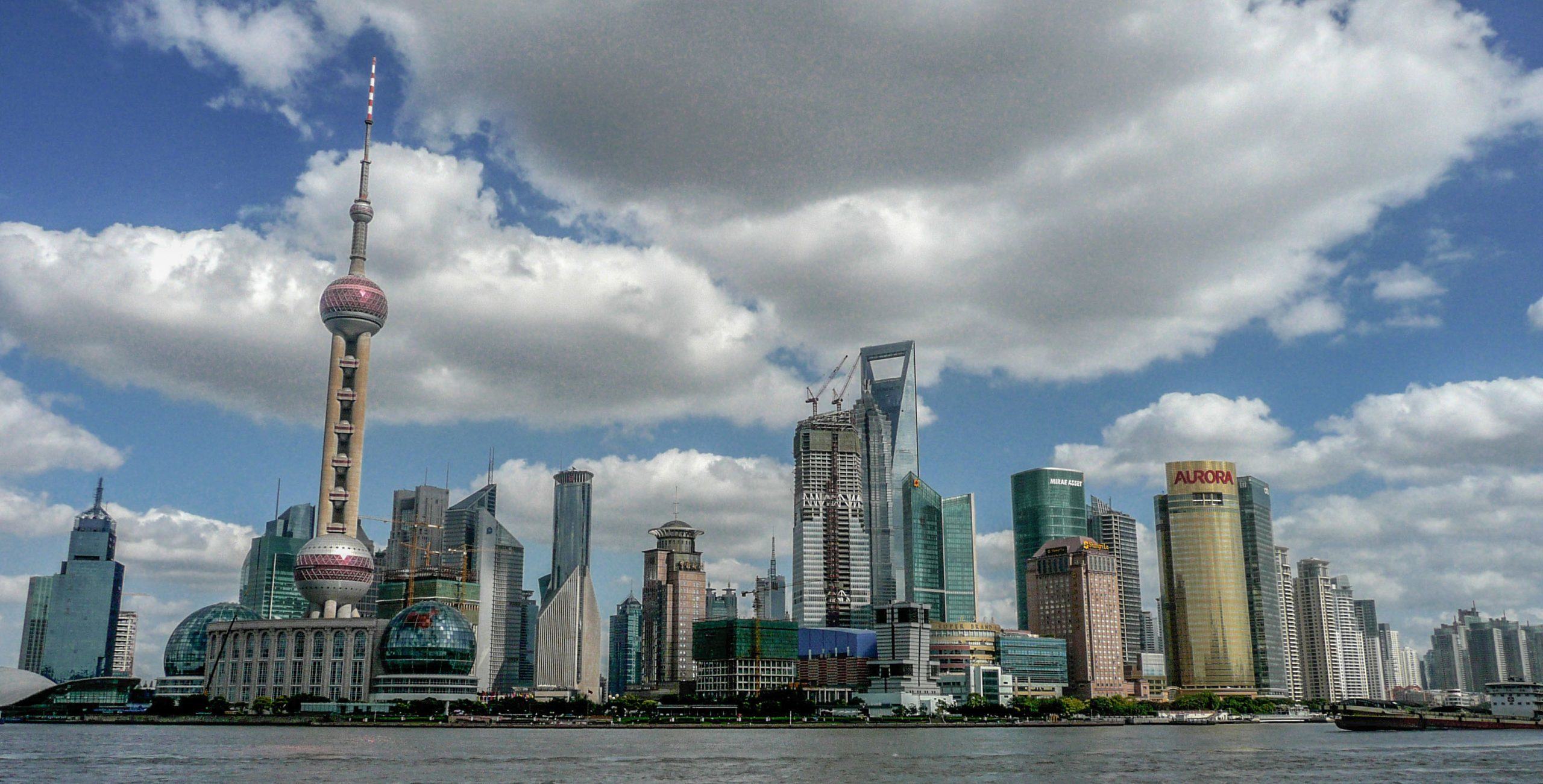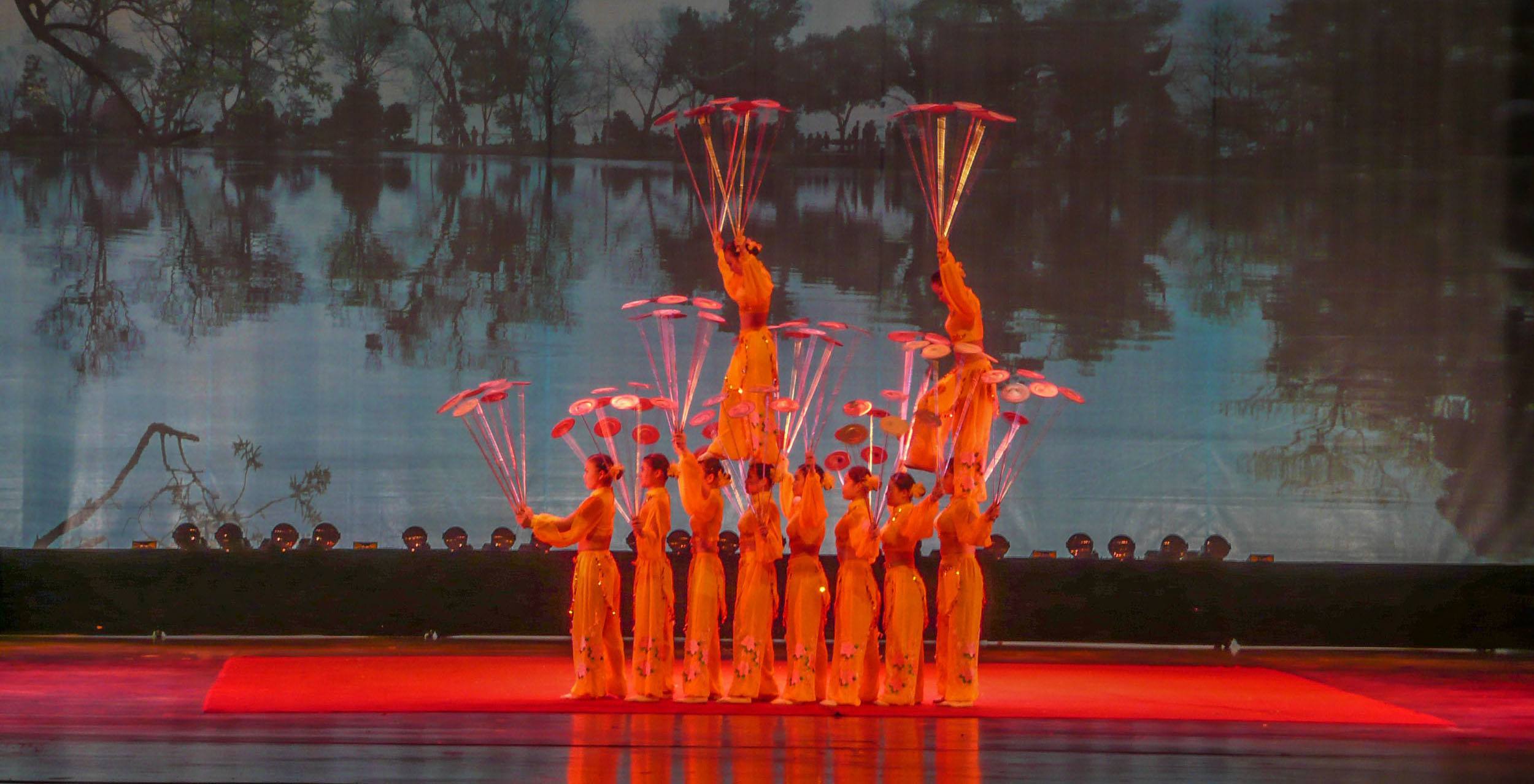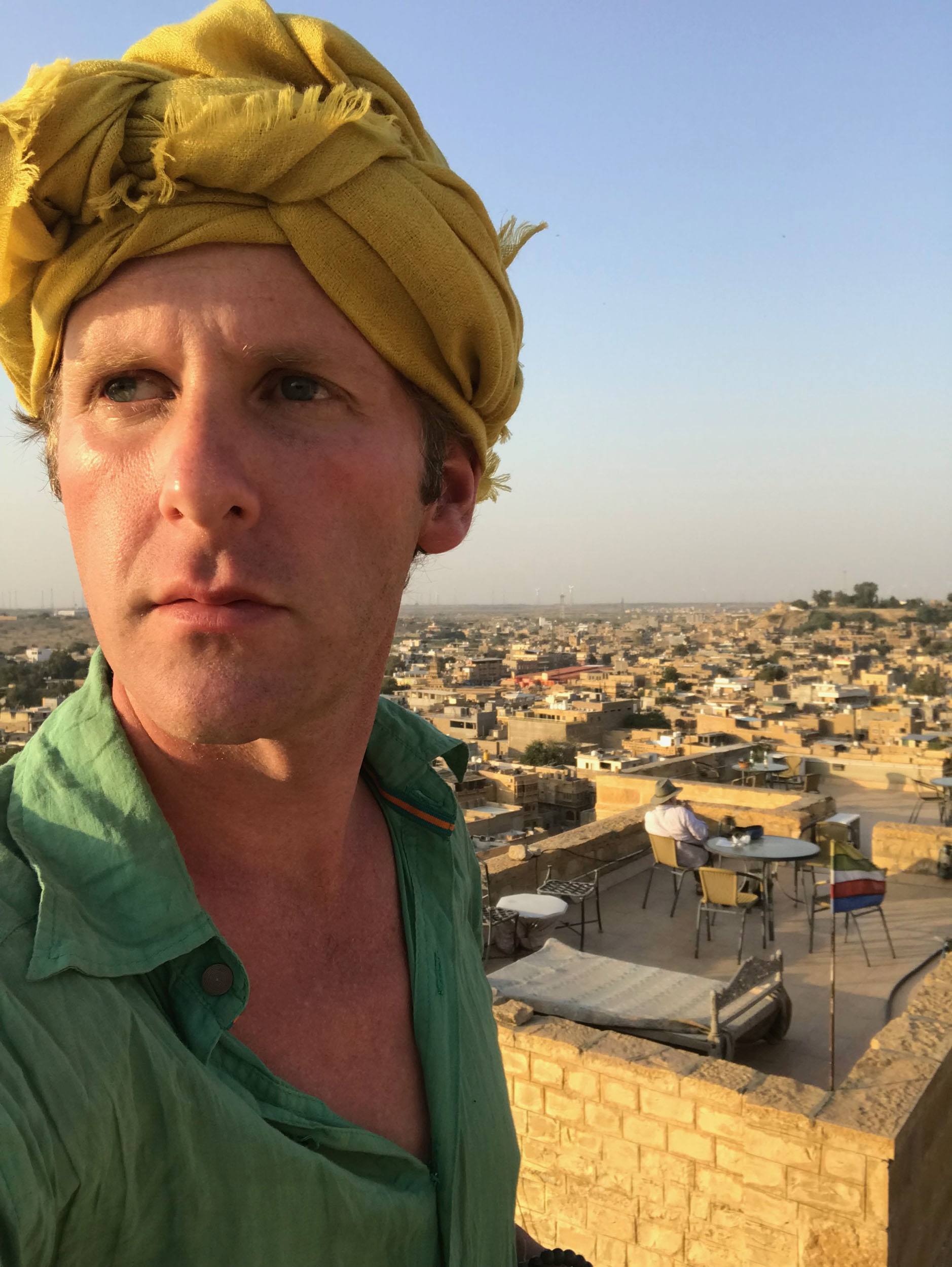Synonymous with Confucianism, ancient fortifications, culinary uniqueness and political stringency, China serves as a point of intrigue for many. Regardless of your motivation for buying a ticket to the ancient land of the Oriental East (closeted to the Western world for years), a journey through China is bound to titillate even meagre curiosity. So, here's a ten-day China travel itinerary that may open your eyes to a different world and help you embark on a journey of discovery.
Beijing - A City Blanketed in Smog
Clothed in a blanket of grey, arriving in Beijing was partly foreboding. As the taxi inched forward, wedged between tail-to-bonnet traffic, skyscrapers emerged through the pollution-cloak enveloping the city.
I knew questions in English would be left unanswered, as I’d had to hand the driver a sheet of paper on which the hotel’s address had been scribbled in hànzì. A month following the Beijing Olympics, I had been amiss to assume basic English would be widely spoken. In a city of nearly seventeen million, it was unreasonable to expect every soul to learn a language to which they’d historically not been exposed (and as a visitor, I should be the one attempting to speak the native language).
I sat in silence and watched: the cityscape transformed as it transpired through the smog.
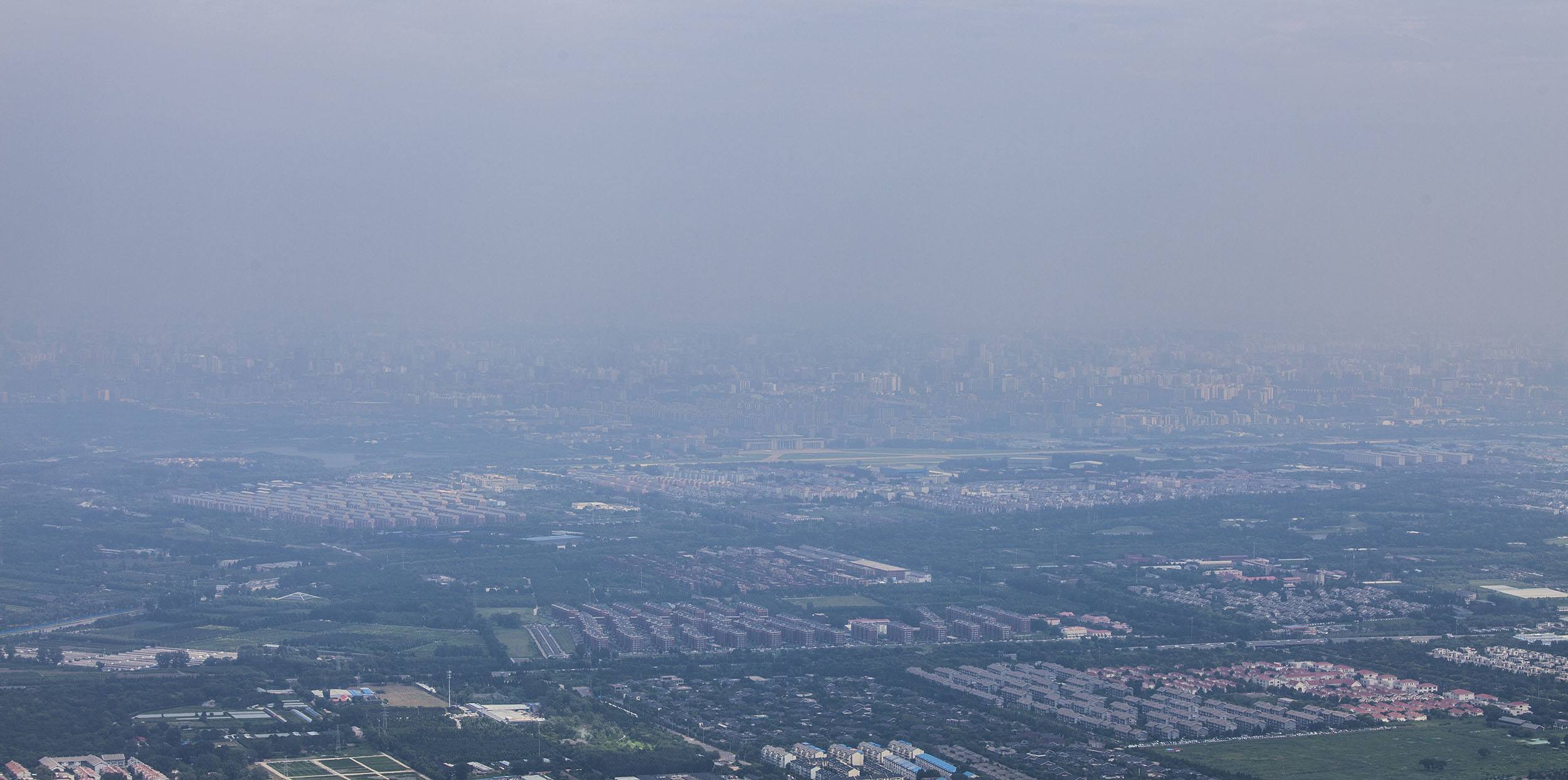
En route to Tiananmen Square later in the day, an area dating to the Ming dynasty - parts of which were rebuilt four centuries later, a seemingly kindred couple approached and opened a line of inquiry in simple English: “Where are you from?” queried the well-dressed woman, not a blemish present on her youthful face.
As I diffidently replied, choosing every word carefully, a solar smile emerged on her partner’s face. They invited me to participate in a traditional Chinese tea ceremony only two streets away.
Reservations I’d had remained, but after developing healthy cynicism (having sometimes been exploited while abroad), I chose to engage; perhaps I’d finally be exposed to an authentic encounter following which I’d walk away with a trace of new cultural understanding in tow.
After entering the dimly-lit minuscule building, as promised only two streets from the infamous Square, I could see assorted varieties of tea presented in glass caddies. As I sat down, another woman emerged from a disguised entrance, her face leathery and tarnished by the pollutant Chinese winds of time. She brought with her a timber tray, transporting a porcelain cup beside a pot with various other pieces of tea ceremony paraphernalia.
The original two bodies disappeared from the room, while I remained, sitting across from the old woman. I hesitantly sipped each glassful of tea-infused water. Diverse spicy aromas permeated the stale air each time her wrinkled hands poured steaming water from the glass pot.
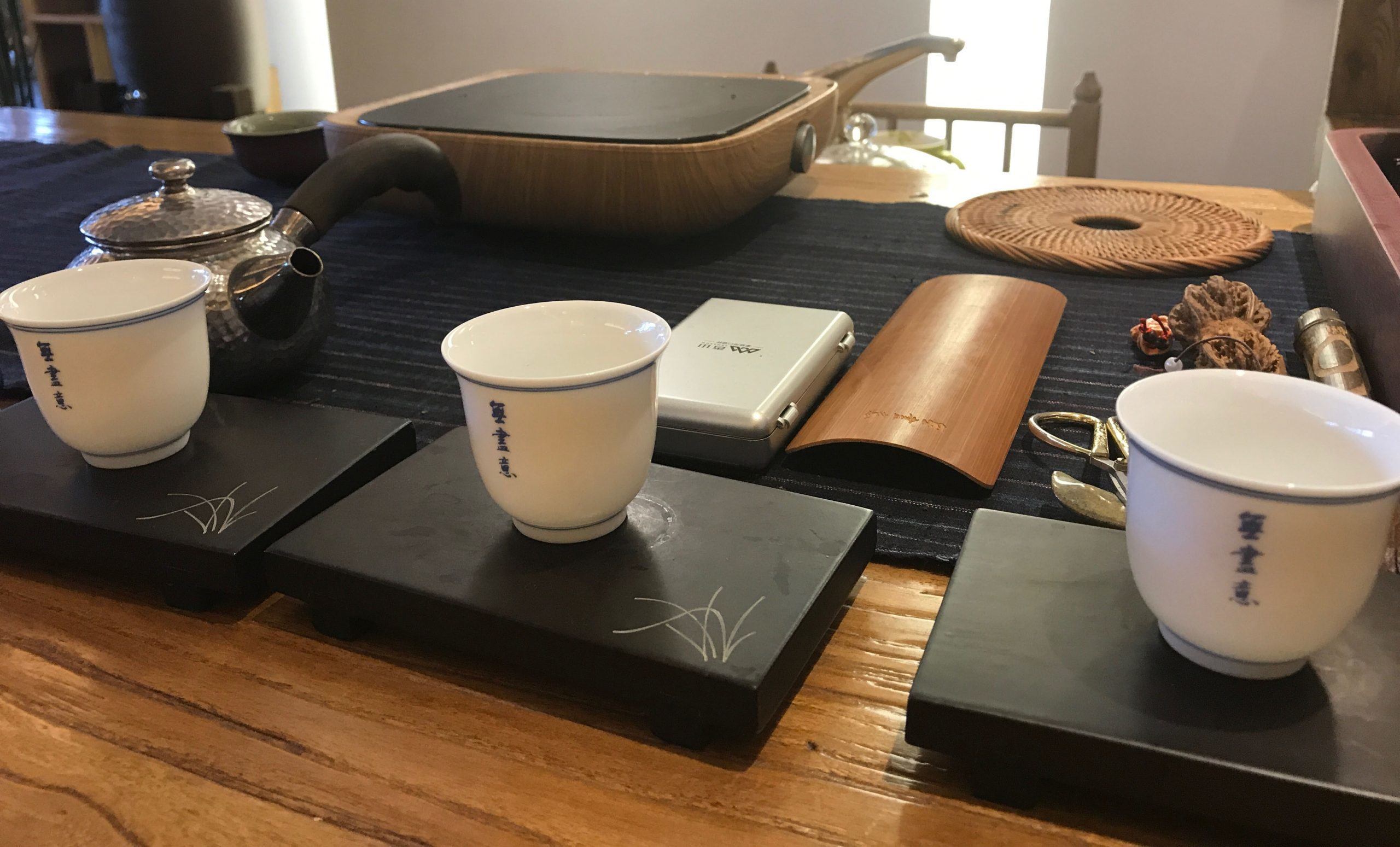
The decadent-cum-spicy flavours temporarily cured me of distrust, until the front door creaked open and the sting of a familiar male voice requested, “Fifty American dollars.”
Refusing to pay such a steep price, I laid one hundred Chinese Renminbi on the table in front of the old woman (the equivalent of AU$20) and uttered “Unbelievable!” under my hot breath as I hastily exited the premises.
I painfully learned another valuable lesson: never completely trust those who approach you with offers on foreign streets - it can often be a ploy to rip you off.
As the bitter taste of manipulation grew within, I walked the streets. Later, new spicy flavours in a bowl of food - a mysterious dish I’d selected at random from a restaurant menu - blotted out the memory of the tea ceremony.
With nine days left in China, I needed an open mind to non-judgmentally embrace the national culture.
Pin this article for future reference.
A Walk in History - the Great Wall of China
Following a visit to the lakes surrounding the enigmatic Summer Palace, located in the north-western corner of the city’s modern periphery, the Great Wall and its ancient fortifications beckoned. The smog started dissipating as the minivan transported the load of eager faces one-and-a-half hours out of Beijing, to the original northern borders of the ostensibly ageless country.
Built originally to serve as a buttress against invading forces, the 8850 kilometre wall - constructed mostly out of assorted raw materials – has not entirely withstood the test of time: standing alone amid natural surroundings, its exterior is at the whim of both mother and human nature, often resulting in erosion and vandalism.
As I walked the part of the wall open to visitors, I couldn’t help but consider the magnitude of operation undertaken to erect its solid structure, done without the help of modern machinery. Built over a period of two thousand years by various dynasties, it is suggested that close to one million people lost their lives.
Supposition aside, the magnitude of the wall and its meandering path that slices the Chinese landscape in two was hypnotising. No visit to China is complete without a stroll along the imposing wall.
Xi’an’s Western Entreat - The Terracotta Warriors
Sitting amid fellow travellers in Beijing West Railway Station, I heard the intermittent hocking of saliva from deep within people’s pharynxes. Rotating right, I witnessed the result of the vocal acoustics: a grotesque ball of thick slimy sputum wobbled its way through the air after being spat out of the offender’s mouth, landing before a pair of feet on the concrete station floor.
Commonplace, the unappetising practice stems from a belief rooted in Chinese Medicine. Considered toxic, mucous is expelled forcefully whenever necessary to relieve the body of harmful pathogens. Perhaps more national health promotion is warranted to deter people from liberating pathogens and sharing them freely in public spaces.
The train journey ended the next morning in Xi’an North Railway Station.
Following a day of dumpling-indulgence and city wall exploration on bicycle, the ancient army of terracotta warriors summoned.
Conceived during the third century BC, the terracotta entourage was constructed – analogous to the funerary rituals of Egypt’s Pharaohs - as a safeguard for Emperor Qin Shi Huang in the afterlife. Similar in size to the country of San Marino, the warriors, their weaponry and their battlement of mighty horses have been uncovered progressively for more than forty years. Intact and formidable, the terracotta force has endured thanks to a chromium covering, supposedly 'invented by America in the nineteen fifties'.
Standing bewildered at the front of the army (arranged in precise battle formation), I began to see puzzle pieces from history slot into the spaces my mind hadn't conjured of contemporary Chinese society. Devout and unquestioning, the people have always moved obediently to the dictatorial beat of the government’s surreptitious order. Ancient dynasties and suspicious emperors perhaps laid the foundation for many of the cultural norms present today.
Nonetheless, the magnitude of the terracotta army was impressive, and transformed Chinese history from my mind into reality.
Following a visit to a local school supporting the rights of disabled people, another train journey ensued, destination: Suzhou.
Suzhou - A City on Water
Before voyeuristically prying through locals’ backdoors from the comfort of a canal-bound gondola, I devoured more delicious dough-wrapped savoury surprises at Suzhou’s famous Yangyang Dumpling Restaurant. Following the harsh crunch of a fried cricket consumed at Beijing’s night markets, the soft-textured bite of a savoury dumpling was otherworldly.
Packed together like sardines, the homes dotted along the city’s canals exposed daily Chinese life to our curious prying eyes. The show’s actors, hanging washing on tidal lines and emptying bowls of kitchen waste into the canal below, were unperturbed by the audience passing in packed vessels.
Complete with red lanterns and oriental trimmings, the rows of homes projected an exotic image of East Asian design. Despite the touristy appeal, making waves in the gondola under the grey sky was an idyllic way to experience Suzhou.

Dressed in traditional attire with silk trimmings, the woman’s painted face – evocative of a Chinese doll - remained unchanged, as her angular fingers plucked the four strings of the pear-shaped wooden pipa resting on her lap. Set to a backdrop of manicured beauty in the Classical Gardens of Suzhou, tremolo reverberated through the courtyard as the middle finger of her right hand whizzed to and fro across the instrument’s body, while her left hand generated portamenti.
The night air filled with oriental harmony, a traditional Chinese regale to a captive audience. It was the perfect finale to the tour of Suzhou.
Shanghai - A Modern Metropolis
Complete with a skyline of futuristic appeal, Shanghai left little to be desired. Although still as polluted as its northern counterpart, it can almost be forgiven because there's so much to experience. From hot pot gourmandise to the Pearl Tower’s wide-sweeping panorama to the manicured gardens of Yuyuan, there was no shortage of activities to fill my three-day itinerary.
To top off my stay, a germinal visit to the Shanghai Centre Theatre highlighted how the Chinese Olympic Gymnastics team always take home a bag-full of gold and silver medals. It was a night of mouth-gaping performances with gymnasts contorting their bodies on bicycles, diving through fiery rings and creating human towers while on bicycles moving around the stage.
Reflections on Visiting China
Following a daytrip to Zhouzhuang, China’s little Venice to the south of Shanghai, I flew home with open eyes. Once a country shrouded in mystery, I was able to personally taste – albeit briefly - some of the country's key features.
With a slightly less ignorant and stereotypical portrayal in mind, I returned several years later to further indulge my curiosity, to the country’s south.
Are you planning a visit to China? I'd love to hear about your plans.
Getting to China - TRANSPORTATION
By Air
The key and biggest points of entry into mainland China are Beijing, Shanghai and Guangzhou. However, you will find international airports scattered all over the country, but most of them don't host intercontinental flights.
Tickets can be expensive, so book as early as you can. It's the most populous country in the world, so there is a lot of movement and competition for seats, especially now it has 'opened up' a little more.
There are flights to mainland China from these following countries and regions:
- Australia
- New Zealand
- Southeast Asia
- Europe
- North America
The key Chinese carriers include:
Take a look at the following websites for up to date route and ticket information, to help you research and identify the most reasonable fare:
By Land
Train
If you are in a neighbouring country, then getting to China will likely be possible by train. Access can also be made from Europe.
Here are a few of the rail connections that exist:
- North Korea - there are regular connections between Pyongyang and Beijing
- Vietnam - via the Friendship Pass, you can travel between Hanoi in Vietnam and Nanning in China
- Hong Kong - there are links between Hong Kong (namely Hung Hom) and Guangzhou East
- Central Asia - there is a connection between Almaty in Kazakhstan to Urumqi in Xinjang, China.
- Russia (and Europe) - thanks to the beautiful and iconic Trans-Siberian Railway, you can travel all the way from Europe, through Russia, Siberia and Mongolia to Beijing in China.
Road (Bus, Car or other)
There are 14 international land borders that China shares with other countries. Some are remote and difficult to reach, but they are also the ones that reward travellers the most, with stunning, panoramic views. Here are some of the possibilities of travel to China from surrounding nations:
- Afghanistan - at the current time, it is not possible to cross this border by land.
- Bhutan - as above, it is not currently possible to cross this land border.
- Macau - there are two land border crossings, at the Portas do Cerco and the Lotus Bridge. It's best to have your visa granted in advance.
- Hong Kong - four land border crossings exist between Hong Kong and mainland China: Lok Ma Chau, Sha Tau Kok, Man Kam To and Shenzhen Bay Bridge (the first of which I used to visit a friend in Shenzhen while staying in Hong Kong, which at the time granted a visa on arrival).
- North Korea - the border in question is called Dandong/Sinuiju. Visas should be in order before attempting to cross. There are also crossing at Tumen/Namyang and Quanhe/Wonjong, however they are not always open to tourists.
- Russia - there are crossings at Manzhouli, Suifenhe, Dongning and Fuyuan. Ensure your visas are granted prior to attempting the crossing.
- Tajikistan - there is one crossing open to foreigners, at Kulma. It's only operational May through November, on weekdays. There is another land border, but it's for use by only Chinese and Tajik nationals.
- Kyrgyzstan - You can utilise the Torugart pass to get into China from Kyrgyzstan, but it is only open during summer. There is another land border crossing at Irkeshtam, with sleeper buses running between Osh and Kashgar.
- Kazakhstan - there is only one land border crossing, at Khorgos. Buses operate between Almaty and Yining. Your visa will need to be arranged prior to attempting the crossing.
- Mongolia - two crossings exist, at Erenhot and Takashiken.
- Nepal - there is a road from Nepal to Tibet (which is considered a part of China) but accessing mainland China via this route is currently only possible via a package tour. It can be arranged in Nepal or abroad.
- Pakistan - take the Karakoram Highway from Pakistan to China for some incredible scenery. Closed to tourists in winter, your options are limited to summer travel only. There is a friendly rapport between the countries, so crossing this border is relatively fast.
- Laos - there are bus connections between Luang Namtha in Laos to Boten, Mengla and Kunming in China.
- Vietnam - there are three overland entries to China from Vietnam. They include Dong Dang to Pingxiang, Lao Cai to Hekou and Mong Cai to Dongxing.
- Myanmar - the crossing is between Lashio in Myanmar and Ruili in China. Permits are required, so joining a guided tour is likely your best bet of utilising this crossing.
- India - there is a crossing at the Nathu La pass between Sikkim and Southern Tibet. However, it's only open as a trade route, so it's not likely you'll be granted access as a tourist.
By Sea
Boat, Ferry and Cruise Ship
There is access to China via one of the above mentioned modes from the following countries:
- Hong Kong
- Macau
- Japan
- South Korea
- Taiwan
- Thailand
Getting around China - TRANSPORTATION
Plane
If you've taken a look at a map, then you will have noticed that China is huge! Getting around, ergo, requires either a lot of time (to travel overland) or some extra cash (spent on flights). China is very well connected internally, so getting from one side to the other is fairly easy (although you need to expect lots of flights delays and cancellations are not uncommon). There are plenty of airlines, so do some searching and find the fare that suits your budget.
Prices are often inflated when using one of the search engines I usually recommend. It is best to buy tickets in China via travel agents or on Chinese websites. I found Ctrip particularly useful. In fact, for trips through China I did in later years, I used the application to book all internal flights. It was hassle free.
If you book through a China-based agency or Ctrip, you will be notified of delays or cancellations so long as you list contact details when making a booking.
Train
The rail network throughout mainland China is expanding at a rapid rate, a network that now covers the entire country. It's the travel mode of choice by Chinese citizens.
I travelled comfortably on all the trains I took, the slow and the high-speed services. The latter are obviously more expensive, but they're more comfortable and will get you from A to B much faster than the older trains.
Train services are divided into categories by numbers and letters (which will be listed on your ticket). Some include:
- G-series - high speed (300 km/h)
- Z-series - moderate speed (160 km/h)
- K-series - moderate speed (120 km/h)
For the non-high speed train services, there are generally five classes:
- Soft sleepers
- Hard sleepers
- Soft seats
- Hard seats
- Standing
To get your ticket (even if it has been purchased online through Ctrip), you must present your identification (generally a passport is the only accepted from of identification for foreigners) to the vendor, who will print the ticket. You must present to collect it, for verification of the ID. Your name will be printed on the ticket.
If you haven't booked your ticket online, have all necessary details written in Mandarin on a piece of paper, so it can be hand-delivered to the clerk at the booking office who likely won't speak English. Include details such as your name (christian and surname), departure and destination stations, date of departure including the time as well as the train number and class.
Bus
There are long-distance buses that operate throughout the country. Comfort varies considerably, however, so discern your preferences and decide on what you're prepared to endure prior to buying a ticket.
As a general rule of thumb, those in the East or services originating from large cities, tend to be clean, comfortable, air-conditioned, accommodating and friendly.
Those in the West or services originating in rural locations, are often the opposite. Throughout my twenties, I enjoyed the 'rough' experience. Now I'm in my thirties, I'm happy to pay a little more for some comfort even if it is at the sacrifice of authenticity. The choice is yours and it depends entirely on your budget, travel philosophy and preferences. If you are travelling only in rural areas, then you may have no other choice.
Getting a ticket can be a game of trial and error. Large stations have ticket counters, most of which sell tickets that include the departure time and boarding gate of the bus (although not always correct). Smaller stations, however, will often employ touts who'll direct you to a counter or bus. It can be a scam, at times, so knowing a little bit of Mandarin or using someone from your accommodation to help can be enormously helpful.
Getting into China - VISAS
Visa-Free
Entering mainland China visa-free depends largely on your nationality and the current passport you carry. There are 15, 30, 60 and 90 day visa-free options, as well as 72 and 144-hour visa-free possibilities: it all depends on your nationality and the international airport at which you're entering the country.
Citizens of Australia, New Zealand, Canada, the United States of America and the United Kingdom - as well as various European Union nationals - are all eligible for the 72-hour and 144-hour options. Here is how it works:
- 72-hour visa-free - eligible to those arriving at the following airports:
- Changsha, Chengdu, Chongqing, Guangzhou, Guilin, Harbin, Kunming, Qingdao, Wuhan, Xi'an or Xiamen
- A ticket confirming onward travel to a third country is required (not an onward ticket to your country of original departure)
- You can stop-over as many times as you like, so long as your destination country is different to your point of origin/departure i.e. Sydney - Guangzhou - Hong Kong - Guangzhou - Sydney (Note that Hong Kong, Taiwan and Macau are classified as 'international')
- Generally speaking, aside from a few exceptions, you must arrive in and depart out of the same airport in China.
- Travel outside of the city of arrival is generally not permitted (there are a few exceptions though)
- Counting of the 72 and 144 hour periods generally begins at 00:01 on the day after arrival
- 144-hour visa-free - eligible to those arriving at the following airports:
- Beijing, Tianjin, Shijiazhuang, Shanghai, Hangzhou, Nanjing, Dalian or Shenyang
- The same rules apply as listed above
See the Travel China Guide for more information
Visa
If you intend to stay longer than the visa-free periods listed in the section above, then you'll most likely be required to obtain a visa prior to arrival in mainland China. It can be achieved by completing the relevant documentation and taking it, along with other essentials and payment, to a Chinese embassy or consulate in your country of origin. Visits to Hong Kong and Macau require separate visa applications, however most citizens from Western nations will not be required to obtain visas for these two nations.
There are many visa categories. The most pertinent to people visiting China for the purpose of travel is the L visa.
No invitation is required, which makes getting a tourist visa relatively uncomplicated. Single-entry visas are valid for 30 days, entry into China required within three months of issue. Double-entry visas must be used within six months of issue.
Even though visas for China should be obtained in your country of origin/residence, on two separate occasions I have been successful in having tourist visas approved in a third country: in Ulaanbaatar (Mongolia) and in London (the United Kingdom). I wouldn't recommend trying, as there's no guarantee you'll be successful. There is conflicting information and advice online about the Consulate in Ulaanbaatar. Days before arriving in Ulaanbaatar, I read that the Chinese consulate had stopped issuing visas, making things awkward for people taking the final leg of the Trans-Siberian train journey. However, I had my visa approved, without any question or hassle, less than a week later.
Staying in China - ACCOMMODATION
I stayed in various hotels and hostels throughout the country, including the Mingtown Etour International Youth Hostel in Shanghai.
Consult the following websites for up to date information regarding prices and availability of accommodation in cities throughout China:
Spending in China - CURRENCY
The currency utilised in China is the Chinese Renminbi. Please refer to the following website for current and up to date exchange rates:

